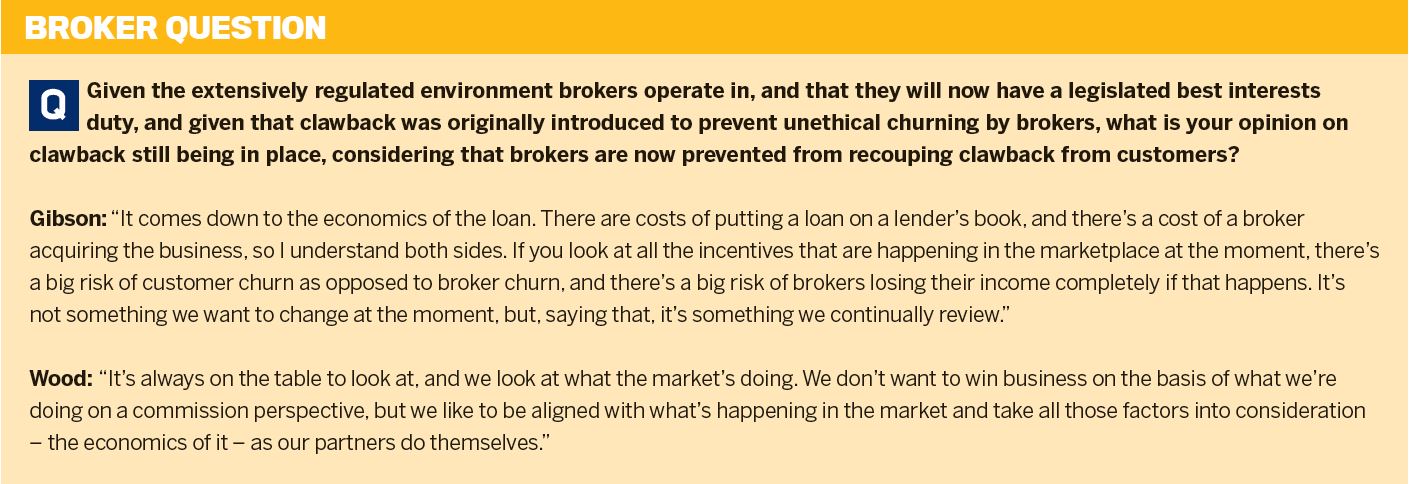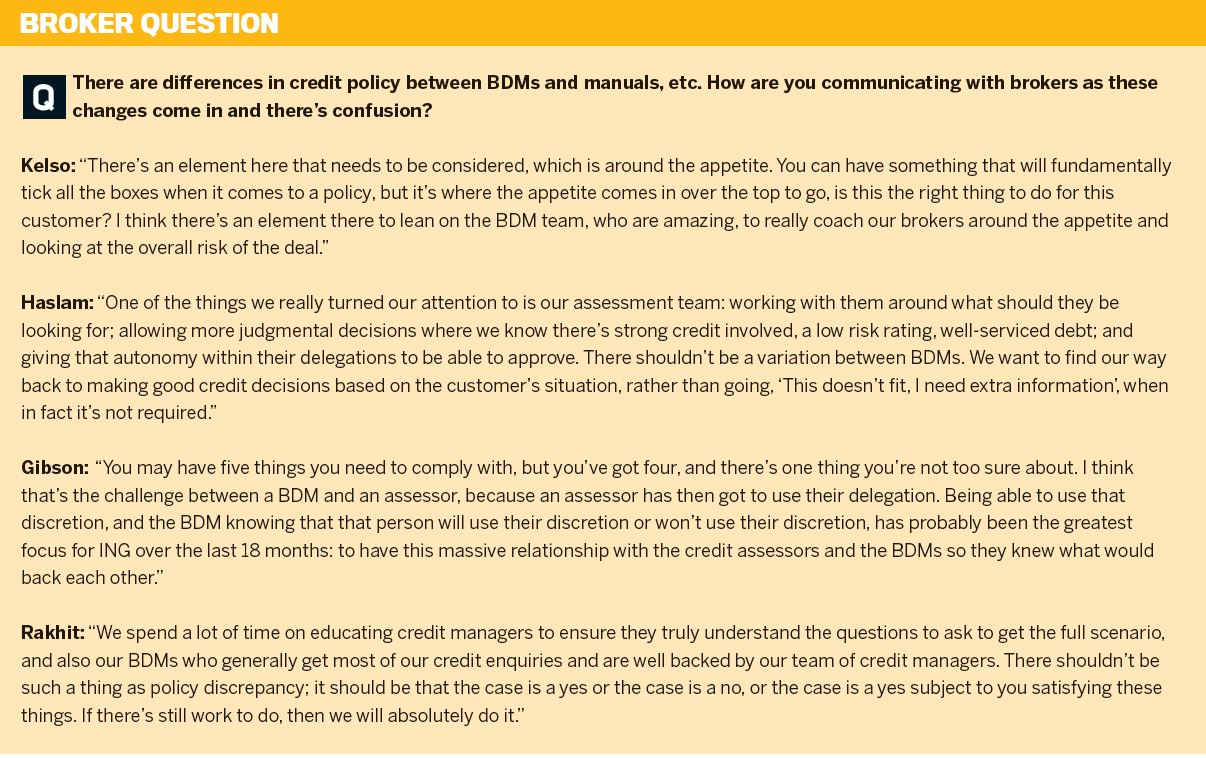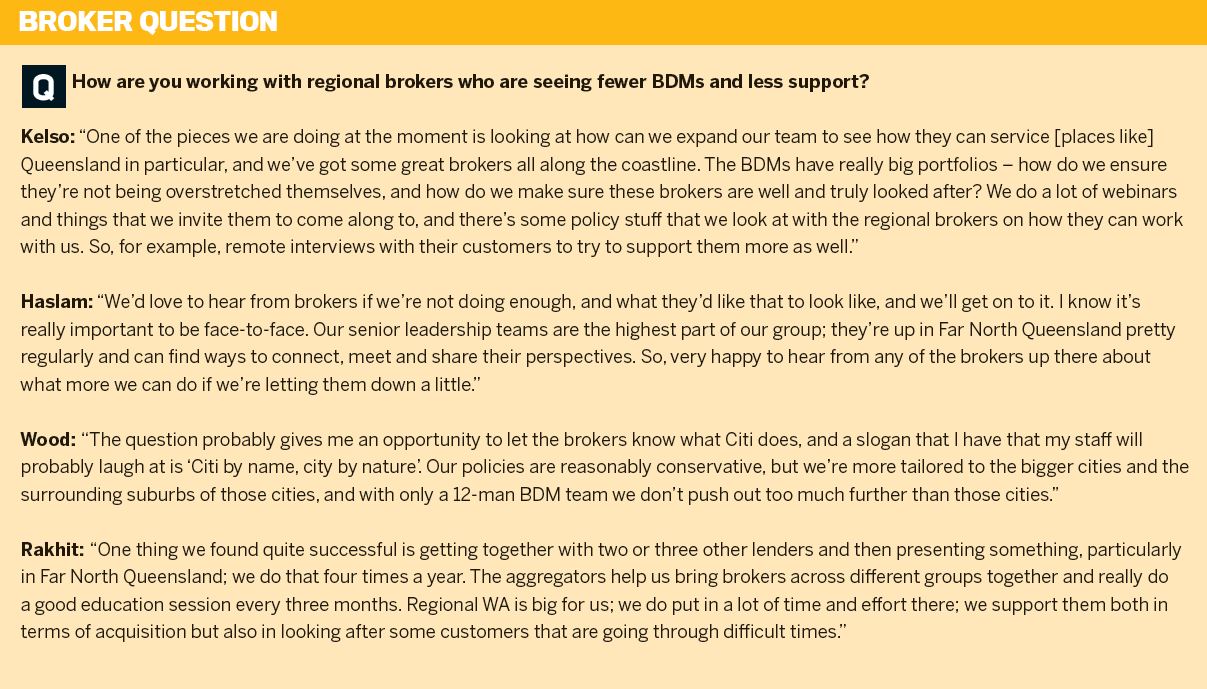Before the pandemic hit, the non-major banks gathered to discuss key industry topics
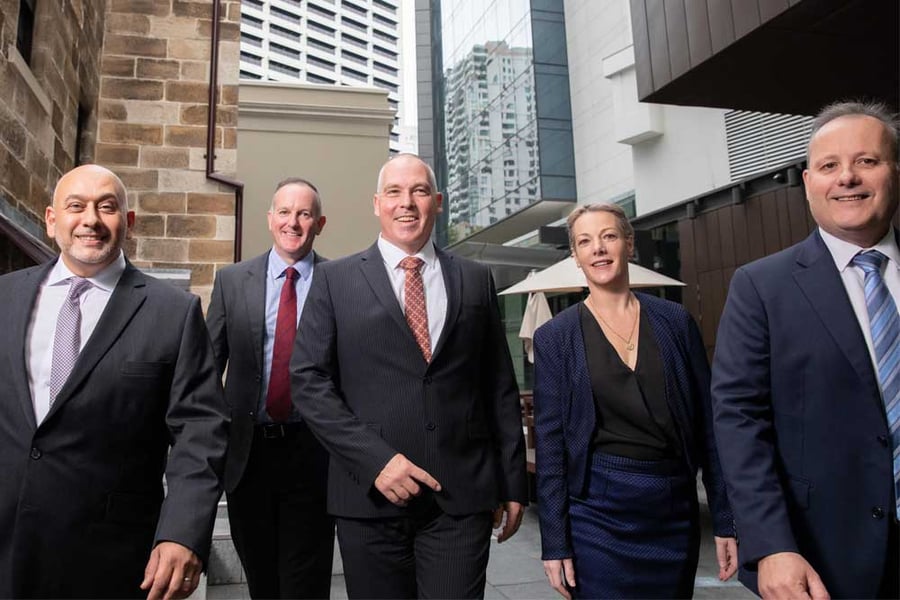
This year's Non-Major Banks Roundtable took place in early March, just a little while before the coronavirus pandemic swept the nation. So, while the event managed to go ahead, there was no discussion of the pandemic.
The non-majors were still able to fill the hour with a discussion of other important industry issues, however. They were asked for their responses to some of the results of MPA’s recent Brokers on Banks survey, including those related to technology, communications and channel conflict, as well as for their views on topical subjects like the first home buyer market and the rise in popularity of non-major banks.
Brokers watching the livestream were encouraged to send in questions, and the non-majors managed to get through several of these. Topics brokers wanted answers on included the best interests duty, support for regional brokers, open banking, and credit policy. The banks’ responses to these questions can be found in the boxouts on the following pages.
Five non-major bank representatives took part in this year’s livestream: Glenn Gibson, head of third party distribution and direct mortgages at ING; Glenn Haslam, executive general manager of lending at Suncorp; Ian Rakhit, general manager third party at Bankwest; Matt Wood, head of mortgage distribution at Citi; and Natasha Kelso, head of broker at Bank of Queensland.
It was interesting to hear the different approaches of the banks in their responses to the questions. While Bank of Queensland and Suncorp were more regional in focus, Matt Wood demonstrated where his bank fell when he used the slogan ‘Citi by name, city by nature’. As is usually the case with the non-majors, there was little in the way of competitiveness or secrecy; these banks often enjoy coming together to share insights and communicate their support for the broker industry.
The report that follows provides an overview of the discussion between the five banks, but if you would like to watch the interview in full, you can do so at www.mpamagazine.com.au.
MPA will be also be holding a virtual roundtable event with aggregators in the coming months, so watch out for that report in an upcoming issue of the magazine.
Q: In our recent Brokers on Banks survey, more than 80% of respondents said channel conflict was either a minor problem or a major problem. For those of you with branches, how do you address channel conflict?
The Brokers on Banks survey, which MPA conducts every year, took place between 13 January and 7 February 2020 and included some questions that are asked each year to determine the changing attitudes and concerns of brokers. One of these questions was on the problem of channel conflict, where brokers feel there is a conflict between the third party channel and the direct-to-bank channel.
In this year’s survey, just over 32% of brokers said channel confl ict was a major problem, 50% said it was a minor problem, and a little over 17% said it was not a problem. While these figures show it is less of a problem than in the previous two years, more than 80% are clearly still affected by it.
When the non-major banks at MPA’s roundtable were asked about this issue, Bankwest’s general manager of third party, Ian Rakhit, said he could not remember the last time he had heard anything about channel conflict at the bank. He thought there were a couple of reasons for that, one being that Bankwest was very proactive in its broker strategy.
“We actually wrote within our strategic roles: to be the best broker bank in Australia,” he said. “So, whether you’re dealing with brokers directly or you’re a support team dealing with those teams dealing directly with brokers, it’s very clear that the client-broker relationship is paramount.
“It’s a message that goes through the bank often – to say brokers introduce a significant number of customers to Bankwest and we must respect that relationship.”
Echoing the importance of getting this message about the value of brokers to employees, Glenn Haslam, Suncorp’s executive general manager of lending, said 68% of the bank’s flow came from brokers, and its teams knew how important that was.
He added that local relationships were key, and the bank connected its brokers with the local branches. While he hadn’t heard about channel conflict at Suncorp, he said he’d heard about it elsewhere.
“One of the things we do talk about a lot at Suncorp is respecting the relationship, but also educating our people on why a customer goes to a broker,” he said. “They go to a broker for advocacy, and they go to a broker for choice, and we need to respect that.”
For Natasha Kelso, head of broker at Bank of Queensland, it was also about respecting the customer’s choice. While she added that the bank was “a bit unique” for having owner-managers, it looked at ways to partner with brokers in the area and ensure their customers had a great experience – and not just at the start of the loan.
“We’ve given our brokers full access to our customer call centre, so if they’ve set the loan with us, they can call up any time after that’s settled and access the loan informa-tion so they can make sure they’re servicing that customer for the life of the loan,” Kelso said.
Q: Something else that came out of the Brokers on Banks survey was that product diversification opportunities are increasingly important. In fact, it was voted the second most important priority for brokers. How are you offering to help in this area?
The product diversification opportunities category has always been somewhere near the bottom in terms of importance to brokers, according to MPA’s previous surveys. However, this year it received the second highest score when we asked them to rate nine different categories between 1 and 5.
ING’s head of third party distribution and direct mortgages, Glenn Gibson, said the bank was looking at diversification opportunities that fit together naturally, such as residential, commercial and small business.
The non-major provides an education program on not only what ING offers but also how brokers can get into different lending areas and diversify their businesses.
“It really comes down to the flows coming back, from a broker’s perspective, from their clients,” he said. “They want to be able to service as many clients as they can, whether that be for personal loans, or for commercial or residential, so we support them through commercial and residential.”
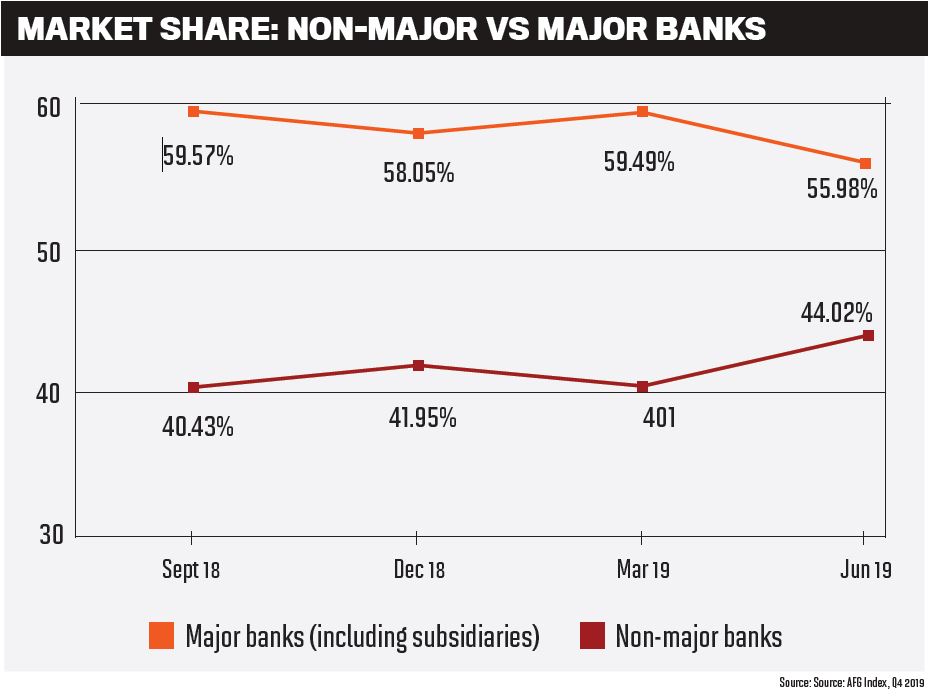
He added, “Citi only does residential mortgages, so we’re quite keen to develop our relationships and add something through our wealth offering, and we’re using the BDMs and wealth relationship managers to partner up and work together.
“It’s been quite successful to start with. It’s just evolving continually, but it’s something that’s making us a little bit different to our competitors in the marketplace.”
“We love getting out and speaking to brokers, listening to brokers and hearing what they’re saying, because the communication coming back ... is fantastic” Glenn Gibson, ING
Q: While none of you were involved in the First Home Loan Deposit Scheme, how are you working with first home buyers and the brokers who are working with them?
At the start of 2020, the government launched the First Home Loan Deposit Scheme, which was set up to help struggling first home buyers get into the housing market. Ten thousand places were released in January for the scheme, which offered a guarantee that first home buyers could purchase a home with as little as 5% deposit. Two of the four major banks were involved in the scheme, alongside 25 other second-tier and regional lenders.
None of the banks on the panel were involved in the scheme, but that didn’t mean there wasn’t a focus on this crucial segment of the market.
Rakhit said Bankwest continued to be strong in this area, lending up to 98% of the value of the property and adjusting its policy for renters’ genuine savings to allow for private landlords.
“It continues to be a good sector for us; it continues to be the one we feel we can differ-entiate in and we feel we can do very well in,” Rakhit said. “So we watch it; we ensure we’ve got the right products to meet those outcomes, and we’ll continue to focus on it.”
With more of a focus on Queensland, Haslam said first home buyers were incredibly important to Suncorp. But he said it was not just about giving them a loan; it was also about helping customers get into those first homes.
“We’re very committed to that. We would have loved to have been part of the scheme; that would have been great, and we’ll continue to pursue that,” Haslam said.
The bank has introduced new products like its Deposit Kickstart offer, which he said he would love to see customers using more. This product allows owner-occupiers to use the equity in the home of a family member towards the purchase of their home.
“We think we have some fantastic products, and that’s one we’d love to see brokers using a little bit more, because of what it actually does for customers. But first home buyers are an absolute priority for us,” Haslam said.
Q: A recent report showed that customers are happier with the non-majors than the majors – why do you think that is?
A survey released by Roy Morgan in January showed that customers are much happier with the mortgage experience provided by the non-major banks than the majors. Home loan customers ranked ME Bank top in this area, and ING came in second.
Gibson said the loan books of the non-majors had grown considerably over the last 12 months, outstripping the growth of their competitors. He said this was down to brokers and customers liking the non-major market due its service proposition, but also because there was more of a desire to use a non-major.
However, he added that the non-majors had let themselves down in the past with regard to consistency of service, but that was now on the way out.
“Where we’ve had good rates, there’s been a spike and turnaround-times blowout,” he explained. “But I think in the last 18 months particularly, we’ve seen a shift. The investment in technology and the investment in processes has meant that consistency of service is there all the time.”
“From an ING perspective, we’ve been at two-day turnaround times now for 12 months. You know what you’re going to get, you know how long it takes, so when you’re speaking to the customer from a broker’s perspective, you know what your service proposition is.”
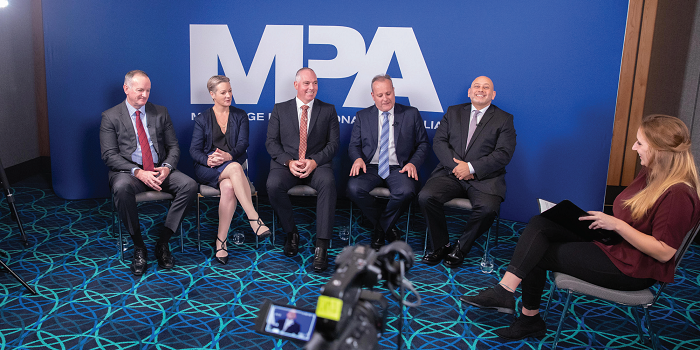
Agreeing, Kelso said the non-majors were able to match the big four in terms of service, and for brokers that was crucial.
“That’s their brand and their own reputation they deliver as well, so they are reliant on us to be able to deliver what they need,” she said. “So, being able to pull in all these things from a technology perspective, and having that out there for the broker to be able to speed up turnaround times and to deliver that same service they were getting from the majors, it makes sense that they’re going to be putting us out there now.”
The non-majors agreed that technology had played a big part in improving their service to customers and brokers. Haslam pointed out that this, combined with the reliability of their service, meant that all of the non-majors were well placed.
“Another one we want to compete on really hard ... is around capability, because it’s much easier now to enable the business from a technology perspective” Glenn Haslam, Suncorp
He added that Suncorp had been working to get into a better position, and he believed they could win on trust.
“We think that’s a really important piece, both with what we do in the bank and then what we also do in the wider insurance busi-ness as well, being there when customers need us most,” he said.
“Another one we want to compete on really hard with this panel is around capa-bility, because it’s much easier now to enable the business from a technology perspective, as opposed to years gone by when we used to look on with great envy at the majors, and that’s well and truly changed now. From our perspective, it’s game on.”
As well as technology helping their propo-sition, the non-majors all agreed it was the broker channel that was really helping them with customers.
Rakhit reiterated that brokers were “critical” to his bank’s success, adding that they represented “phenomenal distribution” for lenders of Bankwest’s size.
“Broker share has grown. Why? Because brokers deliver great customer outcomes, and they need their lender to make them look good to make sure we back that up and make sure we also deliver great customer outcomes,” Rakhit said.
“The same as everyone else, we’ve invested heavily in making sure our service proposi tion is strong and that brokers want to select us because of that service proposition. That ultimately will get us repeat business and deliver great customer outcomes.”
Asked whether the high satisfaction and growth in loan books meant that Bankwest could afford to stay still, Rakhit said the introduction of things like comprehensive credit reporting, open banking and new valuation services would level the playing field even further.
“Speed to approval continues to be one of the main drivers of broker choice and under the best interests duty will still be a really core reason for selecting a particular lender,” he said. “What’s coming on to the market over the next few years is going to help all lenders help all brokers help all customers.”
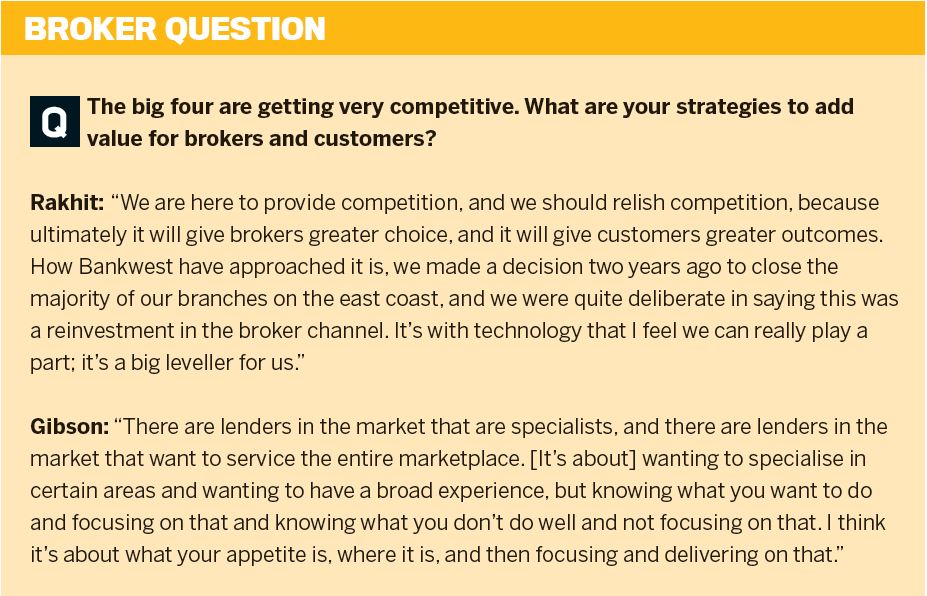
With technology at the front of everyone’s minds, the group continued to expand on some of their earlier comments. Particularly with the surge in neobanks and fintechs over the last few years, the push to innovate and provide the same level of speed and ease had never been stronger. It was also pointed out that while the non-majors may not have loan books of the same size as the majors’, they also did not have the same legacy systems and could therefore be more agile.
“We know we’re going to win on service ... We know there’s a price game there, but it’s hands down a service game, so we need to keep up with technology” Natasha Kelso, Bank of Queensland
At Citi, Wood said there was a focus on growing the mortgage side of the business, which involved a great deal of investment in technology. “We really want to transform and make up for some lost ground that we’ve probably given away to our competitors. It’s time for us now to really make that investment, take it to the next level, improve our technology offering, keep growing that as quickly as we can, and keep investing as heavily as we can.”

He added that the bank already processed 800,000 digital transactions every day, showing the importance of the digital customer experience more widely.
“When you think about the amount of customers you have, and when you think about 800,000 digital interactions daily, that shows you that, OK, it’s about processing mortgages or onboarding, but then it’s what technology do you experience as a customer afterwards?” he said.
“How many people use their phones for everyday transactions? How do you apply for cards over digital applications? I think if you have a look at especially the non-majors and their investments, it hasn’t simply just been in the processing of mortgages; it’s been in the entire customer journey.”
At Suncorp, Haslam said the message was “loud and clear”.
“It’s time for us now to really make that investment, take it to the next level, improve our technology offering, keep growing that as quickly as we can” Matt Wood, Citi
“We need to be more predictable, reliable and consistent. So our focus around technology investments has been hitting those pain points that have been causing some grief, and we have had that investment and we are delivering on some of those programs of work, but it’s ongoing.”
Haslam added that it would not be a case of delivering new technology and then thinking they had “nailed it”. The bank would continue to work on things like optical character recognition (OCR) and robotics. Expense verification was another issue, as different lenders treated this differently.
“The key for us is just being consistent and reliable and predictable, and the neos come along and they can do all the things they like, but if you actually have that confidence in your process, you’ll continue to be quite successful,” he added.
Rakhit said Bankwest had introduced a number of new features over the past 12 months, such as DocuSign with electronic contracts, and a postcode and policy tool.
“More than 90% of our contracts are signed digitally,” he said. “That takes about seven days out of the process, from contract to settlement. That’s a huge win; the broker sees the contract for 12 hours before to make sure it’s correct, and then it goes straight to the customer.
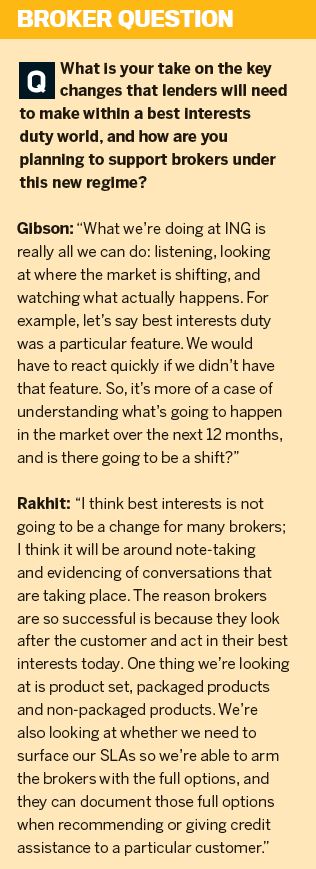
Digital documents are almost becoming expected now at every bank, and Bank of Queensland is no different; Kelso said the non-major had introduced this feature last year.
But something that she was particularly excited about was the work on AI, which will create the ability to scrape bank statements and payslips and then instantly send the information. If there were any discrepancies or questions, it could go back to the broker instantly, and hopefully this would pave the way for faster and more instant approvals.
“So there’s lots of work at the moment going into how we speed up this process,” Kelso said. “We know we’re going to win on service, and that’s absolutely it. We know there’s a price game there, but it’s hands down a service game, so we need to keep up with technology and make all these things happen really quickly.”
Q: In our recent survey, brokers ranked communications, training and development as their third most important priority. What are you doing in these areas?
Taking the place usually held by turnaround times, the category of communications, training and development was voted by brokers as the most important priority in MPA’s Brokers on Banks survey this year.
Gibson said communication had often been a challenge in the industry, for example when businesses, banks or other industry groups might have to reach 17,000 people, and there was also the question of when communication became spam.
So ING had taken a “more proactive approach” when it came to initiatives like training, such as holding human-centred design courses to help brokers think things through a bit differently. Gibson said it was also about “two-way communication”.
“We love getting out and speaking to brokers; eyeballing brokers, listening to brokers and hearing what they’re saying, because the communication back [from them] on what is working, what is not working and what the pressure points are is fantastic,” Gibson said.
“All of us are out and about speaking to brokers all the time, with a desire to listen as opposed to just going through the motions. We need to change our business for the better, and the only way to do that is to speak to the brokers directly.”
With all the changes coming through from the banks, whether related to policy or new innovation, Kelso said the question for her was how she would get all these changes out to brokers without disrupting them with even more emails. Bank of Queensland ran roadshows where it could get in front of the brokers, and the bank teamed up with mortgage insurance provider Genworth to add that extra benefit for brokers attending.
“Fundamentally, it does come back to having a really good team of BDMs out there on the road,” Kelso said. “They’re in front of brokers, and they’re delivering these messages, because it really is a hard piece to get these communications and training out there.”
Wood said Citi also relied on its BDMs to get the bank’s messaging out. Citi had invested heavily in its people, and he said the bank encouraged its BDMs to be “long-termers”, with the average tenure across its BDM team being around seven to eight years.
“It’s a real passion of mine in running the team as to how people are within it, what they’re doing to represent the brand and their own brand, and what the brokers need from them,” he said.
“It’s time for us now to really make that investment, take it to the next level, improve our technology offering, keep growing that as quickly as we can” Matt Wood, Citi
According to Haslam, professional development “is never going to be more important”, particularly as the industry moves forward in terms of regulatory change.
Suncorp offers platforms such as the Sun Broker Academy, a self-service portal that provides courses and team development. It also has its SunEducation program for brokers who want to diversify into small business, and a national event that it hosts along with its insurance team.
Praising the engagement between brokers in different industries, Haslam said, “They all share very similar problems, and insurance is certainly heading down a very similar path with regulation.
He added, “We think there’s real value in the foundational pieces we provide, which is really important and a key part of what we do in differentiating a proposition. But that engagement we found was really quite positive in bringing those two communities together, and we’ll continue doing that this year as well.”
Reiterating the views of many of the other panellists, Rakhit said, “BDMs are the kings and queens”. He added that they were a great source of knowledge on what brokers were talking about and looking for.
“We don’t land any piece of change on our brokers unless our BDMs have already roadtested it and signed it off, and quite often they’ll send things back to the project teams and say, this isn’t ready,” Rakhit said.


